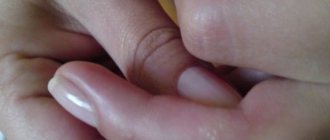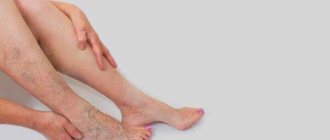If your car breaks down, you take it to a service center, if your pipes are leaking, you call a plumber, and if you have a broken bone, you visit a surgeon. But unlike other things, bones begin to repair themselves. The human body has amazing healing powers that allow it to cope with a number of diseases. Of course, doctors play a vital role in the healing process, but in most cases they simply help the body heal itself. Doctors provide optimal conditions for bone healing, and the rest is up to your cells. But how exactly do bones recover after a fracture? To answer this question, we must study in more detail what bones are made of.
At first glance, the bone looks like an inanimate, immobilized part of our musculoskeletal system. But our entire skeleton is as alive as any part of the body. The body stores minerals in the tough part of the bone. The inner red bone marrow produces red blood cells, and the yellow bone marrow produces fats. It is important to remember that bones are constantly changing. Old bone tissue is replaced with new bone, a process called bone remodeling. Bone tissue consists of osteoclasts, osteoblasts and chondroblasts. The latter are responsible for the formation of cartilage, and all of them together form all bone tissue.
What is a callus
A callus is a conical thickening of the skin that occurs in areas of constant friction or pressure. Most often, calluses appear on the feet (heel, big toe, side of the foot) and on the hands. In men, a callus may appear on the penis due to frequent wearing of too tight underwear.
The main symptom of the appearance of callous formations is the formation of tubercles of rough skin. Depending on the location and appearance, there are several types of calluses:
- dry;
- wet;
- bone.
A dry callus is a small area of thickened, dead skin that is yellowish in color. A wet callus has a thinner surface and is often filled with lymphatic fluid. Callus occurs during the process of bone regeneration after fractures. Separately, bloody calluses, core calluses, and calluses are also distinguished.
Core (root) callus is a type of dry callus and is distinguished by the presence of a thickened keratin core. The external manifestation of a root callus is similar to that of a plantar wart, so a dermatologist can make an accurate diagnosis after performing a dermatoscopy.
Calluses (corns) are wide, flat thickenings of the skin that do not have a hard center. Corns on the feet and hands rarely cause pain when pressed.
A callus with blood is a type of wet callus filled not only with lymph, but also with blood. A callus occurs when blood vessels are too close to the surface of the skin that has been subjected to friction.
Sore bone on the foot
The beauty of women has always been of great importance. Perhaps all modern men will agree with this, and what’s more, even the classics of Russian literature mentioned it. However, it happens that legs, or rather feet, lose their beauty due to a protruding “bone” at the base of the big toe. It is important to understand how to deal with the bunion so as not to torment yourself with pain all your life.
A sore “bunion” (as deformities on the big toes are often called) is perhaps the most popular orthopedic problem, and it is mainly women who suffer from it. Statistics say that men are four times less susceptible to it. The cause of pain in the bone lies in the failure of the ligamentous apparatus - a congenital problem transmitted mainly through the female line.
Why does the bone in my foot hurt?
We need to figure out what is the root cause of the diseased “bone.” This, not surprisingly, is flat feet. A healthy person has a concave foot. There are two concavities in total: the longitudinal concavity is located inside the sole, the transverse one is located near the base of the toes. When the ligaments and tendons cannot withstand the load, the foot becomes flat.
In the case of transverse flatfoot, the metatarsal bones, instead of running parallel to each other, begin to fan out, and the toes follow them. What's wrong with this, you ask? This causes the appearance of a protruding bone: the big toe does not move outward, but, unlike its metatarsal bone, turns inward. As a result, the head of the metatarsal bone of the big toe begins to move out of the joint, and we see a “bump” at the very base of the big toe - this is a visual manifestation of the “bunion”.
Further, the deformation of the bone progresses. Why does the bone in my foot start to hurt? Contact of the protruding knuckle with shoes provokes chafing, which eventually becomes inflamed, and the person feels pain in that same bone on the toe. Next, osteochondral overgrowth appears, and the bone protrudes even more. After some time, its neighbors begin to suffer from the pressure of the deformed thumb. They bend in the wrong position, are fixed in it, eventually acquiring an unnatural curved shape, and pain appears in them too.
This leg disease is a serious problem, especially for women. There is a constant feeling of heaviness and pain in the feet, and the ability to wear shoes and other elegant footwear is lost.
What is the treatment for a bunion? What to do if the bones on your toes hurt?
Many people have asked this question. Let's deal with him.
There are many methods to combat thumb deformation, including traditional ones:
- compresses,
- iodine nets,
- foot massage
- warm foot baths with herbal infusions and sea salt.
These remedies can help relieve pain and reduce inflammation, but they cannot cure the disease itself. The joint remains deformed, and the pain in the foot eventually returns. Only qualified orthopedic surgeons can truly cure this disease, and the radical treatment is surgery on the bone.
The first practices of surgical treatment of a diseased leg bone
At the beginning, the operations to treat the diseased bone were terrible. The orthopedic surgeon simply removed the protruding part of the bone. After a while, the disease appeared again, and in a more acute form, and the pain became even stronger.
The next step in treatment was the Wreden operation, which was named after the man who created it - the famous Russian surgeon R.R. Harmful. The patient experienced less pain during this operation. The method involves completely removing the inflamed metatarsal bone on the big toe. As a result, the big toe ceases to be connected to the foot and is supported only by soft tissues. Oddly enough, when everything heals, people feel relatively well, the pain goes away, and the ability to walk and lead a normal life returns. This practice still exists today. It would seem that there is no need to further develop the treatment of a diseased bone, but medicine continued to progress.
Modern methods of eliminating diseased foot bones
In modern orthopedic operations, bone fragments are cut out and moved to eliminate the diseased bone and give the correct position to the big toe. The finger is fixed with medical screws or knitting needles until final fusion.
There is another treatment option - “closure” of the deformed joint. Orthopedic surgeons remove the cartilage completely and reattach the metatarsal bone to the first phalanx of the big toe in the correct position. As a result, the bone and pain disappear.
Considering what was described above, we can say that a surgical revolution has occurred in the treatment of diseased bones. The most important thing is that the attitude towards the problem and the very essence of treatment have changed. If in the past a deformity of the thumb was considered a defect of one joint and its bones, today an integrated approach is used in the fight against the bunion.
Nowadays, orthopedic surgeons, even taking into account the operation, can rehabilitate a patient in one day. The next day, people begin to walk on their own, albeit with more support on the heel and the outer edge of the foot, but without a cast or crutches. After two weeks, the sutures are removed, and after 1-1.5 months the patient returns to his usual lifestyle, but without pain in the foot.
We can say that modern operations have virtually no disadvantages. Unfortunately, they are not made everywhere. There is a shortage of highly qualified surgeons and special, high-quality, and therefore expensive, equipment. The situation is the same in other countries, but at a much higher cost for surgery on the leg bone.
Are there alternatives to surgery for a sore big toe bone?
Not all people, when asked “what to do if the bones on the feet near the big toe hurt,” want to hear about the need for surgery. There are methods to relieve foot pain. True, if the problem is not solved, the foot disease will progress. Helps reduce pain and improve overall condition
- pain-relieving drugs
- silicone inserts for feet and toes,
- custom orthopedic insoles,
- night orthoses for fixing one or more fingers in the correct position,
- selection of comfortable shoes with the help of an orthopedist.
It should be remembered that in this case the deformity remains and the pain in the bone is relieved only temporarily.
What is bunion surgery?
It’s still not entirely clear what to do if the bones on your feet near your big toe hurt? Let's take a closer look at the operation to remove the diseased bone. Surgical intervention on the bone of the big toe is expressed in the correction of the angle between the metatarsal bones and the phalanges of the fingers. This allows you to return the big toe to its normal position, correct transverse flat feet, and ultimately relieve pain and return the foot to its full function.
In each specific case, the surgical plan may vary depending on the degree of deformity of the foot and accompanying changes in the other toes.
Preparing for bunion surgery
At the initial consultation, the doctor will explain the surgical plan to you and tell you how to prepare your leg for surgery.
If the diseased bone on the foot is not too large, and there are no changes in other toes that require intervention, the entire hospitalization will take only one day.
It is a good idea to prepare your home for the recovery period following surgery. You may want to rearrange your furniture to make it easier to walk around. It is also advisable to stock up on food so that you don’t have to go shopping, which will be uncomfortable given the pain in your finger.
Surgery to remove the bunion to relieve pain in the big toe can be performed under either local or general anesthesia. If the operation is performed under local anesthesia, after several injections at the level of the ankle joint, you will no longer feel your feet. The operation can also be performed under spinal anesthesia, in which sensitivity will be completely absent in both lower extremities, which means the patient will not feel pain.
Before any of these anesthetics, it is recommended that you do not eat for 6 hours before your planned surgery.
Your surgeon will tell you what will happen before, during, and after surgery. If there is something you don't understand, don't hesitate to ask. After you ask all the questions you are interested in and receive answers to them, you will be allowed to sign a consent to undergo surgery on your leg.
What happens during bunion removal surgery?
Surgery on a sore leg rarely lasts more than 1 hour, but the duration still depends on the degree of deformity. There are different options for surgical treatment of bunions, using both open and percutaneous surgical techniques. When using the closed method, artificial “fractures” called “osteotomies” are performed, which restore the normal position of the bones of the foot. With the open method, an incision about 5-7 cm long is made along the inner surface of the foot, which allows you to accurately determine the required angle at which to operate and the degree of displacement of the bone fragments. If the surgeon is experienced, the osteotomy can be performed in a closed manner. With such interventions, large scars are not left, and postoperative pain is usually less. But sometimes in such cases there may be incomplete correction of deformity and delayed consolidation of osteotomies. It is also possible to combine closed and open methods, for example, surgery on the 1st metatarsal bone is performed openly, and on the small rays and phalanges closed.
What follows the operation to remove a bone?
Immediately after bunion surgery, you will remain in the room until the anesthesia wears off completely. Next, within two weeks it will be necessary to bandage the foot. If you have an osteotomy, you will need to wear special forefoot weight-bearing shoes for 6 weeks until the bone fragments have completely healed. These shoes are called “Baruk shoes.”
Causes of calluses
In response to constant friction and pressure, cells begin to synthesize increased amounts of keratin, the skin's protective protein. With calluses, keratin can form a plug in the deep layers of the skin. The main reasons for the formation of calluses on the feet and hands are:
- wearing shoes of the wrong size;
- foot deformities (hammer toes, bunions, bone spurs);
- chafing of the skin due to professional activities (musicians, weightlifters, artisans);
In tight shoes, the skin of the foot is strongly compressed, and in too loose shoes, it slips and rubs, which can cause internal (core) calluses to develop. Calluses on the foot due to toe deformities occur due to improper weight distribution. Due to frequent rubbing of the skin of the hands with professional instruments (strings, bars), calluses appear on the hands.
Dry and wet calluses
Dry calluses are keratinized areas of skin that form in places where bone presses on the skin of the feet (tops of the toes). If you frequently wear tight shoes, dry subungual callus may form.
Wet (water) calluses are whitish-gray in color and have a softer texture because they form in areas of increased sweating on the feet and hands. Water calluses often form between the fingers and toes. If a wet callus on the foot is damaged, an infection can enter the wound, so it is important to treat the damaged area of skin with antiseptic agents.
Tips to avoid infection
A purulent callus requires long-term and unpleasant treatment, so it is better to avoid its appearance. To do this, just follow these simple tips:
- Choose comfortable shoes and socks of the appropriate size,
- Give preference to shoes made from natural materials, do not wear synthetic socks,
- Pay attention to the health of the skin on your feet: lubricate with Vaseline the places most susceptible to rubbing calluses.
- If a blister appears, do not neglect treatment: be sure to treat it, cover it with a band-aid to prevent infection,
- Watch your weight - obese people have a higher risk of developing purulent calluses.
Callus
Callus formation is an important step in the process of bone tissue repair after injury because it helps connect the parts of the damaged bone. After a fracture, the callus is enriched with calcium and gradually turns into normal bone tissue.
Due to insufficient immobilization or poor circulation at the fracture site, callus may form too slowly (delayed fracture consolidation). Its slow formation can cause the bone to heal incorrectly and cause pain.
How to get rid of calluses?
To get rid of calluses, it is enough to temporarily eliminate activities that cause chafing of the skin. You can remove dry calluses manually: you need to steam the skin of your hands and remove rough areas using pumice. In addition, the surgeon may recommend the use of keratolytic agents, which soften the skin. You cannot remove calluses on your own with the help of keratolytics if you have diabetes or pathologies of the immune system, since after removal a wound may form through which an infection can enter the body
You should see a doctor if the callus is painful to step on or touch, as this symptom may indicate the presence of a heel spur, a calcified growth on the surface of the bone. Removal of the callus core is performed by a doctor because removing the callus at home is ineffective and unsafe.
To quickly cure a water callus and avoid its damage, it is necessary to reduce the contact of the inflamed skin with the shoes: you can put a foam insert or a cotton ball between your toes. If the water callus bursts, the doctor prescribes the use of wound healing agents with an antiseptic effect.
Callus removal is performed surgically using local anesthesia. First, the surgeon cuts off the keratin growth on the skin, and then pulls out the rod. To speed up the healing process and prevent the wound from becoming infected, it is recommended to wear a sterile dressing for several days after the callus removal procedure. The surgeon also prescribes local use of antiseptics for two to three weeks after removal of the callus.
Treatment with professional methods
It is recommended to ask your doctor how to treat a purulent callus. This disease is dealt with by specialists in purulent surgery; only a professional will be able to properly open and drain a festering blister in order to prevent infection. If improperly processed and incompletely pumping out the contents, purulent calluses can recur, and the infection can spread through the blood vessels throughout the body. After the procedure, broad-spectrum antibiotics are prescribed to prevent infection.
Three main ways to remove purulent callus in a medical institution:
- If the callus is cored, the root is drilled out by a surgeon using a specially selected cutter of a certain size. Antiseptic drugs are instilled into the resulting wound to prevent re-festering.
- The laser immediately coagulates (cauterizes) nearby blood vessels, so pathogens do not spread through the blood vessels. Healing time is 3-5 days
- Cryotherapy is the most effective treatment method. During the procedure, healthy skin is not affected; only the purulent callus and its contents are removed. Usually carried out in advanced cases when a lot of pus has accumulated.
Callus or wart?
A wart is a small growth that is caused by the human papillomavirus (HPV). Calluses and warts may be similar in appearance. A wart can be distinguished by its more granular structure and location (warts can appear on any part of the body). To accurately make a diagnosis (callus or wart) and select treatment, the surgeon can conduct a dermoscopic examination and additionally prescribe a test for human papillomavirus (HPV).










